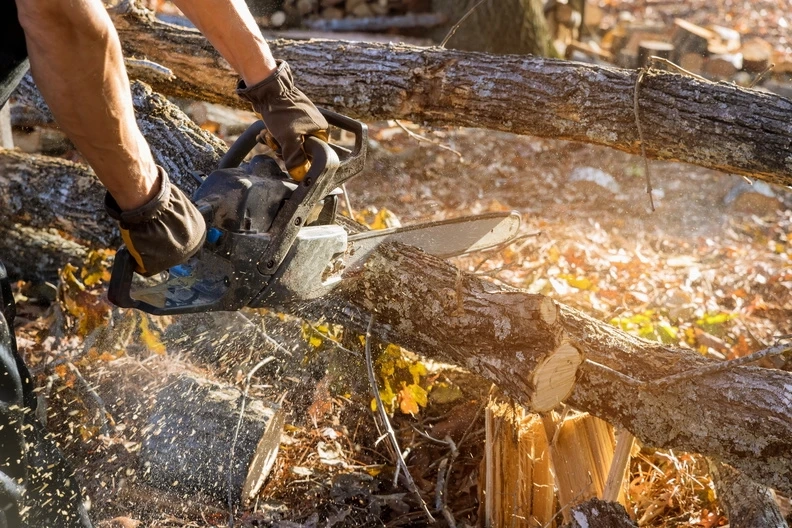Tree removal is an essential process in maintaining the safety, environmental balance, and aesthetics of our surroundings. While trees provide numerous benefits, such as oxygen production, shade, and habitat for wildlife, there are instances when tree removal becomes necessary. Whether it's due to a diseased tree, potential hazards, or urban development needs, the process of tree removal plays a crucial role in preserving safety, promoting healthy growth, mitigating risks, and enhancing our urban environments. This article delves into the process of tree removal and highlights its importance and benefits in greater detail.
What Is The Process Of Tree Removal?
Assessment and Planning:
The tree removal process begins with a comprehensive assessment by certified arborists or tree care professionals. They evaluate the tree's health, structural integrity, proximity to structures, and potential risks. Based on the assessment, they develop a detailed plan for the removal, taking into consideration the tree's size, location, surrounding environment, and the desired outcome of the removal.
Obtaining Permits and Compliance:
In some regions, obtaining permits is necessary before tree removal. Local authorities may require permits to ensure the removal adheres to environmental regulations and preserves the overall well-being of the ecosystem. Compliance with local regulations, such as those related to protected species or conservation areas, is essential. It is important to consult with local authorities or tree care professionals to understand the specific requirements and ensure legal compliance in your area.
Tree Felling Techniques:
Tree felling is the process of cutting down a tree. Depending on the tree's size and location, different techniques are employed to ensure safe and controlled removal. Directional felling involves cutting the tree in a particular direction, away from structures or other valuable trees. Crane-assisted felling utilizes cranes to safely lower sections of the tree to the ground. Dismantling, often used for trees in confined spaces, involves removing the tree in smaller sections. The choice of technique depends on various factors, including the tree's condition, location, and potential hazards.
Tree Removal and Disposal:
Once the tree is felled, the next step is to remove it from the site. This process involves cutting the tree into manageable sections and safely transporting them away using specialized equipment, such as cranes, loaders, or chippers. Depending on local regulations and the condition of the tree, the removed sections may be repurposed as timber, used for firewood, or sent for recycling. Proper disposal methods are crucial to minimize environmental impact.
What Are The Importance and Benefits of Tree Removal?
Hazard Mitigation:
Tree removal becomes necessary when a tree poses a threat to nearby structures, power lines, or pedestrians. Diseased or decaying trees, storm-damaged trees, or those with unstable root systems can become hazardous, increasing the risk of falling branches or complete tree failure. Timely removal of such trees ensures the safety of individuals and prevents potential property damage.
Preventing Spread of Diseases and Pests:
Diseased trees can harbor pathogens or pests that can spread to other healthy trees in the vicinity. Removing infected trees is crucial to prevent the further spread of diseases or infestations, protecting the overall health of the urban forest. Tree care professionals can identify signs of disease or pest infestations and recommend appropriate actions, including removal if necessary, to mitigate the risks.
Promoting Healthy Growth:
In certain cases, tree removal becomes necessary to facilitate the healthy growth of nearby trees. Overcrowding and competition for resources can lead to stunted growth, weakened trees, and increased vulnerability to pests and diseases. Removing select trees allows the remaining ones to thrive by providing adequate sunlight, water, and nutrients, thereby promoting overall forest health.
Urban Development and Infrastructure:
As cities expand and infrastructural needs evolve, tree removal becomes inevitable. Creating space for new buildings, roads, or utilities often requires removing existing trees. However, responsible urban development also emphasizes the importance of replanting trees elsewhere or incorporating green spaces to maintain a balance between development and environmental conservation. Tree removal, in this context, becomes a part of a broader strategy that aims to create sustainable, green urban environments.
Landscape Design and Aesthetics:
Strategic tree removal plays a vital role in enhancing the aesthetics of our surroundings. Removing undesirable or invasive species, or selectively thinning trees, can improve the overall landscape design, allowing desirable species to flourish and creating visually appealing environments. It also provides opportunities for new planting projects, introducing diverse tree species that better complement the local ecosystem, further enriching the visual appeal of the area.
Tree removal, when done responsibly and with careful consideration, serves a crucial role in preserving safety, promoting healthy growth, mitigating risks, and enhancing our urban environments. Through proper assessment, planning, and execution, tree removal professionals ensure that the removal process is carried out efficiently while minimizing environmental impact.
By recognizing the importance and benefits of tree removal, we can strike a balance between maintaining the health of our urban forests, meeting the demands of urban development, and creating aesthetically pleasing surroundings. Tree removal should always be approached with a holistic perspective, considering long-term sustainability and the incorporation of replanting initiatives, reaffirming our commitment to environmental stewardship and the overall well-being of our communities.
Our team of professionals performs tree removal, stump removal, lot clearing, tree trimming, tree identification and selection, historic tree preservation, stump grinding, shrubbery trimming and tree care services. Our team uses advanced equipment and tools to ensure that the job is completed efficiently. We believe that our business has continued to grow over the years due to the personalized service that we offer and the strong relationships we've formed since 1986.
For more info visit Our Website: http://lenktree.com


